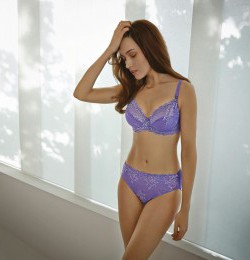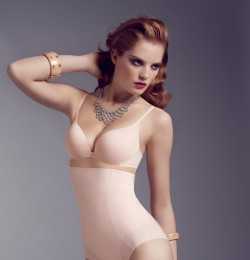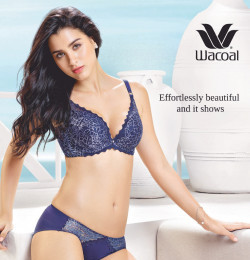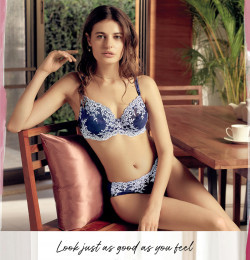

Wacoal
Kyoto 601-8530
China
About
Wacoal is now one of the biggest lingerie brands in the world and the leading lingerie maker in Japan. In the 70s Wacoal was launched throughout the rest of Asia, from Thailand and Singapore to China and Vietnam. The label soon became the number one lingerie brand in Asia. In the 80s, Wacoal went on to expand throughout the rest of the world. After launching a branch in the US, Wacoal was introduced to France in 1992. This branch allowed the brand to expand easily to the rest of Europe
The multinational public company is headquartered in Kyoto, Japan, and manufactures and sells women's intimate apparel and outerwear (such as slips, bra-slips, and briefs) and children's nightwear, sportswear, underwear, outerwear, and other products under a variety of brand names, including the top-priced "Wacoal" line of innerwear, the licensed "Donna Karan Intimates" line of innerwear, and mid-price label "Parfage." .
For over the half of century, Wacoal has evolved hand-in-hand with Japanese women and their adoption of the culture of western clothing. At Wacoal, the "body" is seen as having both a physical and a mental / spiritual side, and brand�s intimate apparel and wellness businesses, based on the core competences, offers three corresponding forms of value: beauty, comfort and health.
history
In June 1948 jewellery seller Koichi Tsukamoto looked around and saw "a curious thing which looked like a small cake made of cloth. On the top of a spiral spring made of aluminum was some cotton stuffing and the whole was covered with cloth. When it was put on a woman's bust, it made it look glamorous." It was called a "brapad," and said that it would sweep through Japan. Tsukamoto, knowing that men already used pads to enhance their shoulders, created some samples.
Traveling to the famous Ginza shopping center in Tokyo, Tsukamoto sold out his first batch of brapads, then selling for 100 each, and discovered a rival company, Aoyama Shouten. Having seen brassieres in a U.S. magazine by this time, Tsukamoto rushed home and decided to try putting the pad in a cloth bag that would be held against the breast with straps. Since no one else was making bras in Japan at the time, he tried to devise a paper pattern in the shape of a bowl by fitting it to the bust of his wife. He eventually bought cloth and found a sewing subcontractor, but met with much failure early on. Eventually, he fashioned a workable prototype. Naming his first original product "No. 101," Tsukamoto's product began selling well.
Tsukamoto then began the difficult task of bringing people into his fledgling company. Finally, he found Ikuo Kawaguchi and Iichi Nakamura, both graduates of The Hachiman School of Commerce. Kawaguchi left a steady job working in Mitsubishi Heavy Industry's Kyoto Apparatus Factory. Nakamura, who had moved from Hachiman to Yokohama Commercial School and Tokyo Commercial College (now Hitotsubashi University) to study management and accounting, left his teaching job at Hachiman in March 1949 to join the company as well. Tsukamoto took the name of his father Kumejiro's former company, Wako Shoji.
On October 9 of that year, Wako Shoji exhibited brapads and brassieres at a department store exhibition, which went well. But the same day, Kumejiro, who had taken ill while working for the company and died, was buried. In honor of his father, Tsukamoto incorporated the company on November 1, as Wako Shoji Co. Ltd. and one of his early customers, Hanzawa Shouten, ordered 50 dozen brapads.
But the new company floundered in the seasonal clothing market, which slumped traditionally in the fourth quarter of the year, and Tsukamoto's friends ridiculed his choice of business. However, Yasuda, the brapad designer, provided fabrics and Tsukamoto, driven by a desire to not lay off any of the employees he had attracted, formulated an ambitious series of five 10-year plans toward becoming a global leader in the industry.
During the 50s�, Tsukamoto wanted to concentrate on the domestic market. Sales did begin to grow as Japanese women became more and more conscious of changing fashions and looked to the West for new ideas. Hanzawa ordered a hundred dozen in February 1950, but Tsukamoto, seeing in their warehouse piles of lingerie he had never encountered before, asked to be paid in trade for the new items. He took them back to Kyoto and began selling the items there, while Hanzawa sold the brapads in Tokyo. Also that year, Tsukamoto met Kohiro Kihara, a sewing manufacturer who was looking for civilian contracts. Kihara put up 50,000 and began manufacturing brassieres and packaging them with care, infusing Wako Shoji with pride in production that led it to worldwide success.
In June 1950, Tsukamoto met with Takashimaya Department Store's fashion department chief and asked him to take them on as a client. The chief refused, Tsukamoto took it to the chief's boss, and got a one-week trial period in the Kyoto store. Set in an out-of-the-way corner of the building, Tsukamoto packaged goods and ran the cash register while saleswoman Miyo Uchida sold the products. In one week, the company sold five times more lingerie than Takashimaya's larger store in Aoyama had done. Asking to have product included in the Osaka store, Tsukamoto again was turned down. Again, he found a new ear, this time the Osaka store manager, who looked at the products Wako Shoji offered and bought enough to fill three of the four display cases in the Osaka store.
In May 1951, Tsukamoto approached Kihara about merging the two companies. Kihara refused, but Tsukamoto offered him the presidency. Kihara capitulated and Tsukamoto demoted himself to senior managing director. Wako Shoji bought Kihara's factory from the owner, with 150,000 of Tsukamoto's money, a 1.5 million loan from a bank, using the building title as security, paid 1.25 million up front, leveraged the rest on debt, and bought electric sewing machines with the remaining 250,000.
By the fall of 1952, Wako Shoji was in most major Japanese department stores except Hankyu, who unexpectedly asked Tsukamoto if they would hold a fashion show. Ensconced in a very traditional society, the company could not find any professional models who were willing to wear such skimpy clothing, especially on the runway, so Tsukamoto was forced to hire strippers in order to hold the company's first fashion show. The second ten years, from 1960 to 1970, the plan was to steadily expand the domestic market in Japan, which the company did very successfully, followed by the expansion into overseas markets further.
The Look
Modern European look's lingerie for basic Asian underwear market with the emphasis on healthiness
Who Wears It
Oprah Winfrey, Gwyneth Paltrow, Kate Beckinsale, Natasha Richardson, Lori Morgan
Official Social Media
Latest Wacoal Advertisements
Latest Catalogues from Wacoal
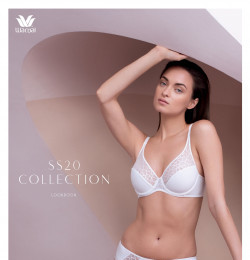
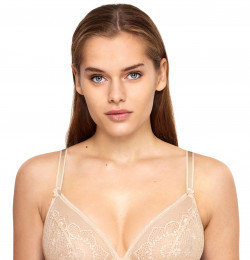
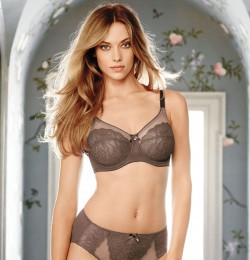
Look Books from Wacoal
